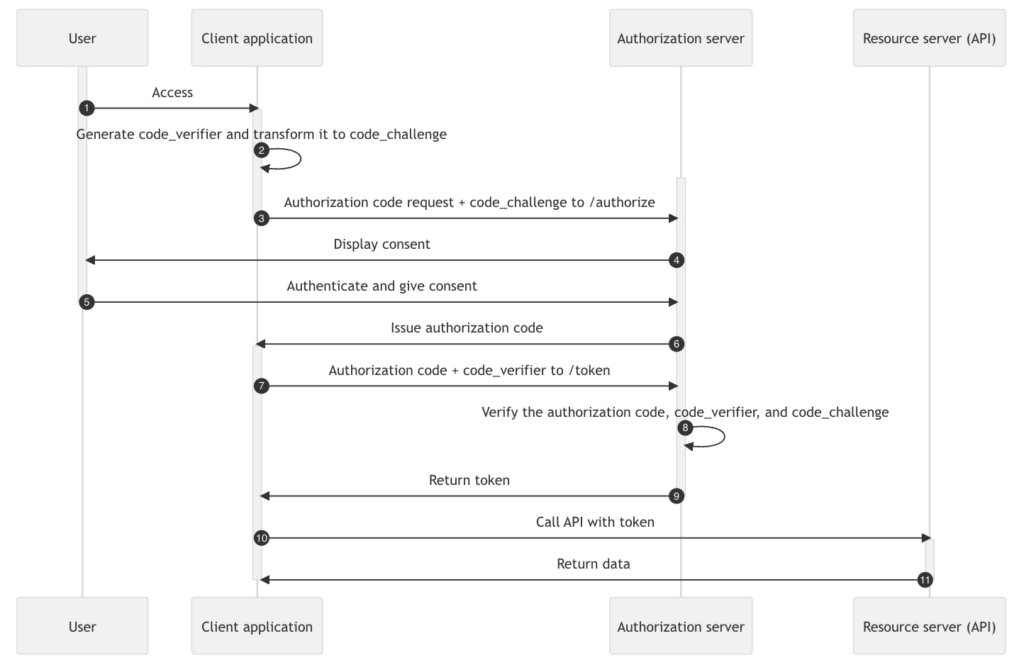Software-as-a-service (SaaS) applications have become central to how businesses operate, both for internal use and for the customer-facing services those businesses provide. These SaaS applications can generally be categorised into B2B (Business-to-Business) and B2C (Business-to-Consumer) models, each serving different audiences and tailored to meet different requirements.
While the underlying concept of SaaS — delivering software over the internet rather than requiring local installations — remains the same for each, the way applications are developed, marketed, and used varies significantly between the two models. Particularly from a CIAM perspective.
The needs of businesses and individual consumers vary widely, and understanding the differences between the two is critical for companies developing SaaS applications. By tailoring development, marketing, and sales strategies to meet the unique demands of either the B2B or B2C model, SaaS providers can more effectively serve their target audiences and build lasting customer relationships.
My name’s Peter Fernandez, and in this article, I’m going to explain the crucial differences between B2C and B2B SaaS applications and the way in which CIAM can address the requirements of each.
What is B2B?
A B2B (Business-to-Business) SaaS solution is a software application delivered over the Internet that’s primarily targeted at organisations, or organisational teams, rather than individual consumers. These applications are designed to help businesses optimise their operations, improve efficiency, and even offer enhanced services to their own customers (commonly referred to as the B2B2C model).
B2B applications typically address specific business needs such as customer relationship management (CRM), enterprise resource planning (ERP), project management, accounting, or communication tools. Some examples of these include Salesforce, HubSpot, Slack, Asana, and QuickBooks, where robust functionalities, advanced features, and integration capabilities meet the demands of organisations, regardless of their industry or size.
What is B2C?
On the other hand, B2C (Business-to-Consumer) applications are designed to provide products or services directly to individual consumers. These applications often focus on user engagement, entertainment, or convenience, and in the B2C model, businesses aim to attract a large volume of users, usually with simpler and more accessible solutions.
Some examples of B2C applications include platforms like Netflix, Spotify, Instagram, and Uber, which are all geared toward individual users with varying needs, ranging from entertainment to convenience in daily life.
Customer Base
The most obvious distinction between B2C and B2B SaaS applications lies in the target audience. Fundamentally, one of the biggest differences between the development of B2B and B2C applications is the notion of Multitenancy: B2B applications must cater for the distinct and isolated groups of users associated with each business customer.
- B2B applications are primarily designed for business organisations or organisational teams. Customers tend to be other businesses that use the software to streamline internal processes, manage projects, or improve team collaboration. The decision-makers for B2B SaaS solutions are typically senior managers, department heads, or procurement teams, who evaluate the software based on its ability to address business needs and provide ROI.
- B2C applications, on the other hand, target individual consumers who typically choose applications based on personal interests, convenience, or entertainment value. Purchasing decisions are made by individuals, and factors such as ease of use, cost, and brand reputation play a significant role in their decision-making process.
Sales Process
In a B2C context, the sales process is typically simpler and more straightforward, relying on individual purchasing decisions. In a B2B context, the sales process is often more complex and involves multiple stakeholders, with the sales cycle often being much longer and more complex, too.
- B2B applications usually require a more consultative and tailored sales approach. Organisations typically go through several stages, including research, product demos, and multiple rounds of negotiations before committing to a purchase. The software needs to be integrated into existing systems, which might require customisation or onboarding, and there may be a need for training. As a result, B2B SaaS companies often have dedicated sales and support teams to guide prospects through the buying process.
- B2C applications, in contrast, typically have a shorter, more transactional sales cycle. Consumers often make decisions based on personal preferences, immediate needs, and user reviews. A B2C SaaS application may rely heavily on marketing efforts, such as online advertising or social media campaigns, to attract customers. Purchasing decisions are made quickly, often through a single click or sign-up process, and onboarding is usually simple and automated.
Pricing Models
Another key difference between B2C and B2B SaaS applications lies in their pricing models.
- B2B applications often use tiered subscription pricing based on the number of users, features, or the level of support provided. These pricing plans are designed to accommodate the varied needs of organisations, from small teams to large enterprises. Custom pricing is also common, especially for larger organisations or more complex use cases. B2B SaaS pricing can range from per-user, per-month fees to customised enterprise contracts.
- B2C applications generally use more straightforward pricing models, such as freemium (offering a free version with limited features) or one-time fees for app purchases. Freemium models are common in apps like Spotify or Dropbox, where users can access basic features for free but need to upgrade to premium versions for additional functionalities or an ad-free experience. B2C apps also tend to have smaller price points to appeal to a wider audience of individual consumers.
In recent times, freemium plans have also become popular in the B2B SaaS application model. Powered by secure and frictionless signup and onboarding experiences, this provides a try-before-you-buy marketing approach.
User Experience
The user experience (UX) in B2B and B2C SaaS applications differs greatly based on the target audience, particularly from the CIAM perspective.
- B2B applications tend to offer more complex, feature-rich solutions tailored to specific business needs. These applications often provide customisation options to accommodate different workflows, integrate with other existing enterprise systems, and employ complex access control mechanisms for teams. As a result, the interface may appear more complex, with advanced features that require training or onboarding. The goal is to provide businesses with powerful tools to manage and optimise their operations.
- B2C applications prioritise simplicity and user-friendliness. Since individual consumers often have little time or inclination to learn complex software, B2C applications focus on providing intuitive, straightforward interfaces that offer an immediate solution. The emphasis is on ease of use, quick setup, and immediate gratification, which aims to deliver a positive experience with minimal barriers to entry.
Customer Support
B2C applications tend to rely more heavily on self-service capabilities. While customer support is available, it often comes in the form of automated chatbots, FAQs, knowledge bases, and forums. Since individual consumers are generally less likely to require personalised support, these solutions focus on providing help through automated channels that quickly address common issues.
Secure self-service capabilities that follow industry best practices greatly reduce risk and, as a result, are becoming just as important in B2B SaaS scenarios, too. For instance, secure self-service password reset and profile management can greatly reduce the risk of Phishing attacks, account takeover, and the like.
Conversely, B2B applications typically require a more personalised, ongoing customer support strategy. Businesses are often looking for dedicated support teams, service-level agreements (SLAs), and customised training. These applications may also have technical customer support teams that assist with issues such as integrations, data migration, or software customisation.
Integration and Customisation
B2B software usually offers deep integration capabilities with other software in-house systems, such as the corporate IdP and the like. This is essential for organisations that rely on multiple platforms for different functions (e.g., CRM, ERP, or HR systems). B2B SaaS providers often offer extensive APIs and customizable features to ensure their product fits seamlessly within a company’s existing technology ecosystem.
B2C software tends to offer fewer integration options, as it’s often a standalone solution aimed at individual users. For example, a music streaming service like Spotify doesn’t need to integrate with other apps (focusing on delivering a self-contained, user-centric experience), but does offer the ability to sign up and sign in using Social providers and the like.
From a CIAM perspective, whilst there are similarities, there are also significant differences between the requirements from a B2B vs B2C perspective, and you can read more about those in my follow-up article:




























Leave a Reply